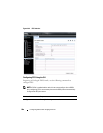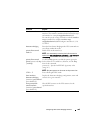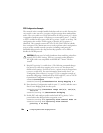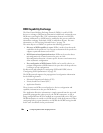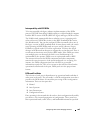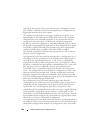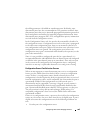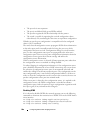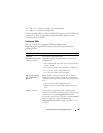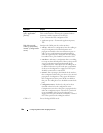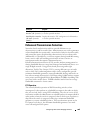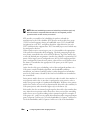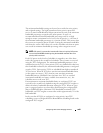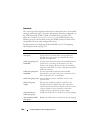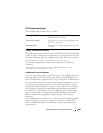
996 Configuring Data Center Bridging Features
• The port role is auto-upstream.
• The port is enabled with link up and DCBx enabled.
• The port has negotiated a DCBx relationship with the partner.
• The switch is capable of supporting the received configuration values,
either directly or by translating the values into an equivalent configuration.
Whether or not the peer configuration is compatible with the configured
values is NOT considered.
The newly elected configuration source propagates DCBx client information
to the other ports and is internally marked as being the port over which
configuration has been received. Configuration changes received from the
peer over the configuration source port are propagated to the other auto
configuration ports. Ports receiving auto configuration information from the
configuration source ignore their current settings and utilize the
configuration source information.
When a configuration source is selected, all auto-upstream ports other than
the configuration source are marked as willing disabled.
To reduce flapping of configuration information, if the configuration source
port is disabled, disconnected, or loses LLDP connectivity, the system clears
the selection of configuration source port (if not manually selected) and
enables the willing bit on all auto-upstream ports. The configuration on the
auto configuration ports is not cleared (configuration holdover). If the user
wishes to clear the configuration on the system in this scenario, the user can
put the configuration source port into manual mode.
When a new port is selected as the configuration source, it is marked as the
configuration source, the DCBx configuration is refreshed on all auto
configuration ports, and each port may begin configuration negotiation with
their peer again (if any information has changed).
Disabling DCBX
If it is desired to disable DCBX, the network operator can use the following
commands to eliminate the transmission of DCBX TLVs in the LLDP frames
on an interface:
no lldp tlv-select dcbxp application-priority
no lldp tlv-select dcbxp congestion-notification
no lldp tlv-select dcbxp ets-config



